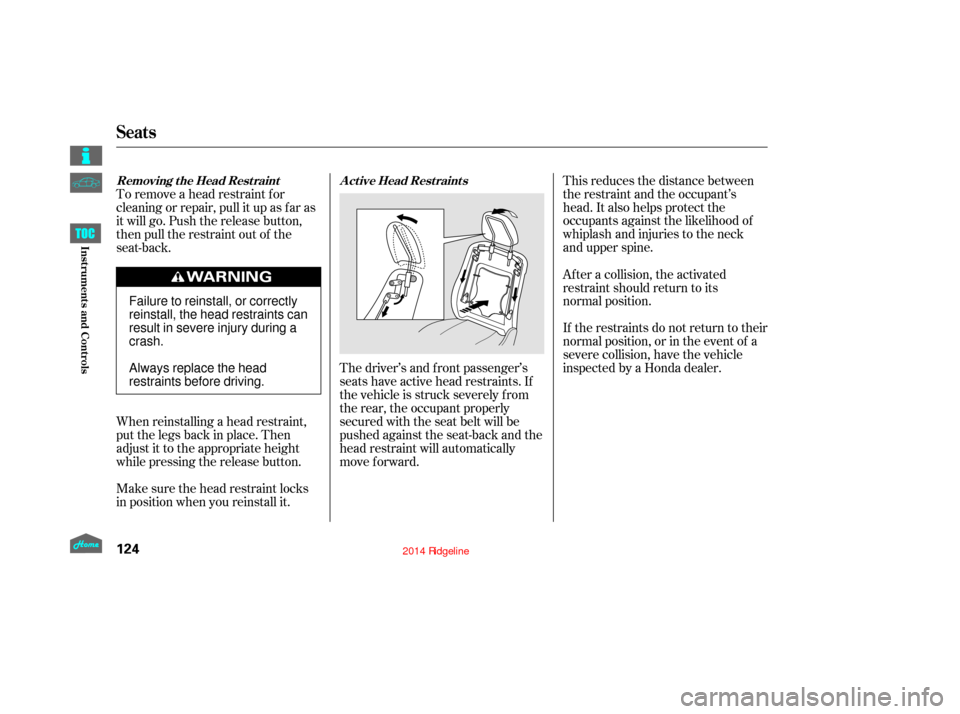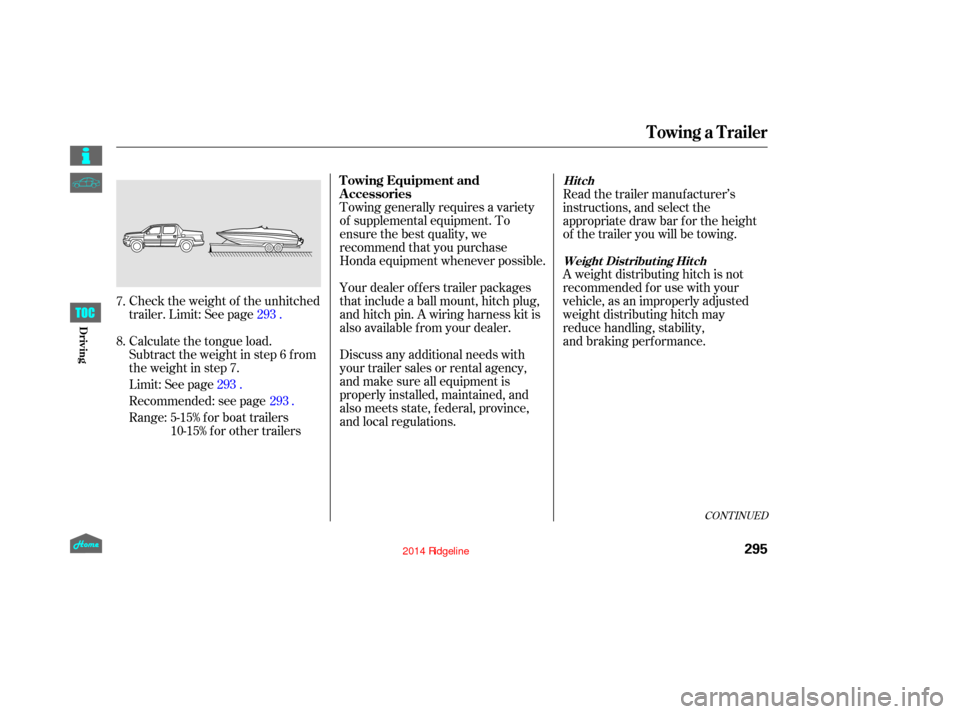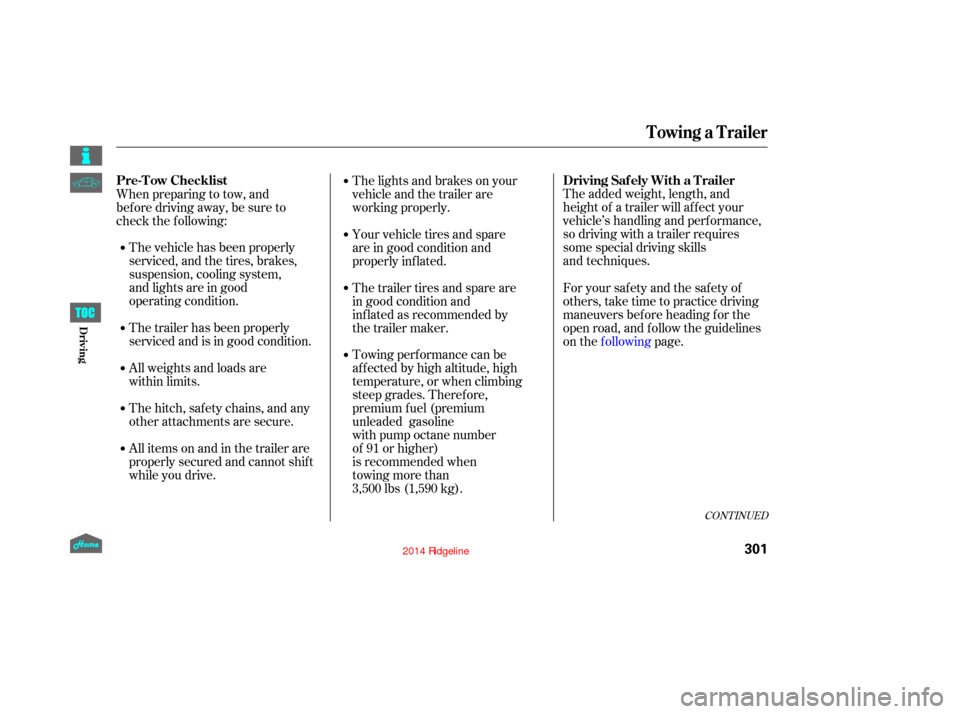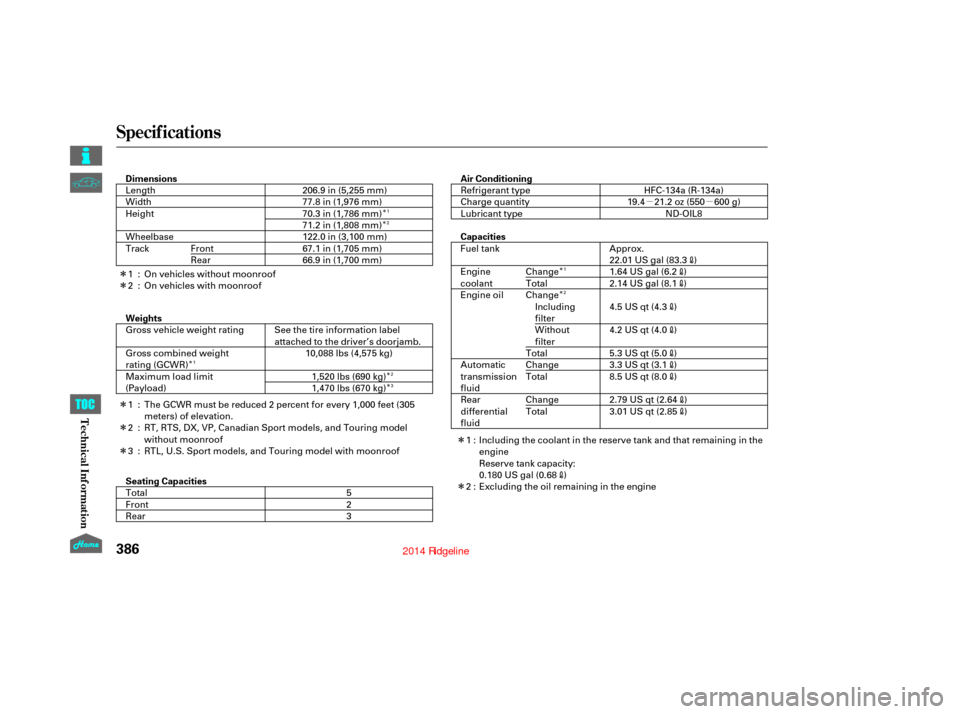Page 129 of 422

The driver’s and f ront passenger’s
seats have active head restraints. If
the vehicle is struck severely f rom
the rear, the occupant properly
secured with the seat belt will be
pushed against the seat-back and the
head restraint will automatically
move forward.This reduces the distance between
the restraint and the occupant’s
head. It also helps protect the
occupants against the likelihood of
whiplash and injuries to the neck
and upper spine.
To remove a head restraint for
cleaning or repair, pull it up as far as
it will go. Push the release button,
then pull the restraint out of the
seat-back.
If the restraints do not return to their
normal position, or in the event of a
severe collision, have the vehicle
inspected by a Honda dealer. After a collision, the activated
restraint should return to its
normal position.
Make sure the head restraint locks
in position when you reinstall it. When reinstalling a head restraint,
put the legs back in place. Then
adjust it to the appropriate height
while pressing the release button.
Seats
A ct ive Head Rest raint s
Removing t he Head Rest raint
124
Failure to reinstall, or correctly
reinstall, the head restraints can
result in severe injury during a
crash.
Always replace the head
restraints before driving.
12/08/09 16:15:44 31SJC670_131
Inst rument s and Cont rols
Page 300 of 422

Check the weight of the unhitched
trailer. Limit: See page.Towing generally requires a variety
of supplemental equipment. To
ensure the best quality, we
recommend that you purchase
Honda equipment whenever possible.
Discuss any additional needs with
your trailer sales or rental agency,
and make sure all equipment is
properly installed, maintained, and
also meets state, f ederal, province,
and local regulations. Your dealer of f ers trailer packages
that include a ball mount, hitch plug,
and hitch pin. A wiring harness kit is
also available from your dealer. Read the trailer manufacturer’s
instructions, and select the
appropriate draw bar f or the height
of the trailer you will be towing.
A weight distributing hitch is not
recommended for use with your
vehicle, as an improperly adjusted
weight distributing hitch may
reduce handling, stability,
and braking performance.
Calculate the tongue load.
Subtract the weight in step 6 f rom
the weight in step 7.
Limit: See page .
Recommended: see page .
Range: 5-15% f or boat trailers 10-15% f or other trailers
7.
8.
293
293 293
CONT INUED
T owing Equipment and
A ccessoriesHitch
Weight Distributing Hitch
Towing a Trailer
295
12/08/09 16:38:05 31SJC670_302
Driving
Page 306 of 422

The added weight, length, and
height of a trailer will affect your
vehicle’s handling and performance,
so driving with a trailer requires
some special driving skills
and techniques.
The vehicle has been properly
serviced, and the tires, brakes,
suspension, cooling system,
and lights are in good
operating condition.
The trailer has been properly
serviced and is in good condition.
All weights and loads are
within limits.
Thehitch,safetychains,andany
other attachments are secure.
Allitemsonandinthetrailerare
properly secured and cannot shif t
while you drive.
When preparing to tow, and
before driving away, be sure to
check the following:
Towing performance can be
affected by high altitude, high
temperature, or when climbing
steep grades. Therefore,
premium fuel (premium
unleaded gasoline
with pump octane number
of 91 or higher)
is recommended when
towing more than
3,500 lbs (1,590 kg). The trailer tires and spare are
in good condition and
inflated as recommended by
the trailer maker. Your vehicle tires and spare
are in good condition and
properly inflated. The lights and brakes on your
vehicle and the trailer are
working properly.Foryoursafetyandthesafetyof
others,taketimetopracticedriving
maneuvers bef ore heading f or the
open road, and f ollow the guidelines
on thef ollowing page.
CONT INUED
Driving Saf ely With a T railer
Pre-T ow Checklist
Towing a Trailer
301
12/08/09 16:38:56 31SJC670_308
Driving
Page 391 of 422

�µ�µ
�Î
�Î
�Î
�Î
�Î �Î �Î
�Î
�Î
�Î�Î
�Î
�Î
�Î
Specif ications
386
Air Conditioning
Dimensions
Capacities
Weights
Seating Capacities 206.9 in (5,255 mm)
77.8 in (1,976 mm)
70.3 in (1,786 mm)
Refrigerant type
Charge quantity
Lubricant type HFC-134a (R-134a)
19.4 21.2 oz (550 600 g) ND-OIL8
1,470 lbs (670 kg) 1,520 lbs (690 kg)
10,088 lbs (4,575 kg)
Length
Width
Height
Wheelbase
Track
66.9 in (1,700 mm) 67.1 in (1,705 mm)
122.0 in (3,100 mm)
The GCWR must be reduced 2 percent for every 1,000 feet (305
meters) of elevation. Fuel tank
Engine
coolant
Engine oil
Automatic
transmission
fluid
Rear
differential
fluid
22.01 US gal (83.3
)
1.64 US gal (6.2)
2.14 US gal (8.1)
4.2 US qt (4.0
)
4.5 US qt (4.3
)
5.3 US qt (5.0
)
3.3 US qt (3.1)
8.5 US qt (8.0)
2.79 US qt (2.64
)
3.01 US qt (2.85)
Including the coolant in the reserve tank and that remaining in the
engine
Reserve tank capacity:
0.180 US gal (0.68
)
Excluding the oil remaining in the engine
71.2 in (1,808 mm)
Gross vehicle weight rating
Gross combined weight
rating (GCWR)
Maximum load limit
(Payload) See the tire information label
attached to the driver’s doorjamb.
3 2
5
Total
Front
Rear Approx.
Front
Rear
1:
2:
1:
2:
3:
Change
Total
Change
Including
filter
Without
filter
Total
Change
Total
Change
Total
1: 2: On vehicles without moonroof
On vehicles with moonroof
RT, RTS, DX, VP, Canadian Sport models, and Touring model
without moonroof
RTL, U.S. Sport models, and Touring model with moonroof
1
2
31
2
1
2
12/08/09 16:49:52 31SJC670_393
Technical Inf ormation
Page 395 of 422
�µ
�µ
�µ
�µ
�µ
�µ
�µ
The tires that came on your vehicle
have a number of markings. Those
you should be aware of are
described below.
Rim diameter in inches.
Load index (a numerical code
associated with the maximum
load the tire can carry).
Speed symbol (an
alphabetical code indicating
the maximum speed rating).
Whenever tires are replaced, they
should be replaced with tires of the
same size. The following is an
example of tire size with an
explanation of what
each component means.
Vehicletype(Pindicates
passenger vehicle).
Tire width in millimeters.
Aspect ratio (the tire’s section
height as a percentage of its
width).
Tire construction code (R
indicates radial).
R 65 245 P 17
105
T
Tire Labeling
Tire Size
390
TIRE LABELING EXAMPLE
(1)
(2)
(3)
(4) (4) (3) (2) (1)
(1)
Tire Identification Number (TIN) Tire Size
Maximum Tire Pressure
Maximum Tire Load
P245/65R17 105T
12/08/09 16:50:42 31SJC670_397
Technical Inf ormation